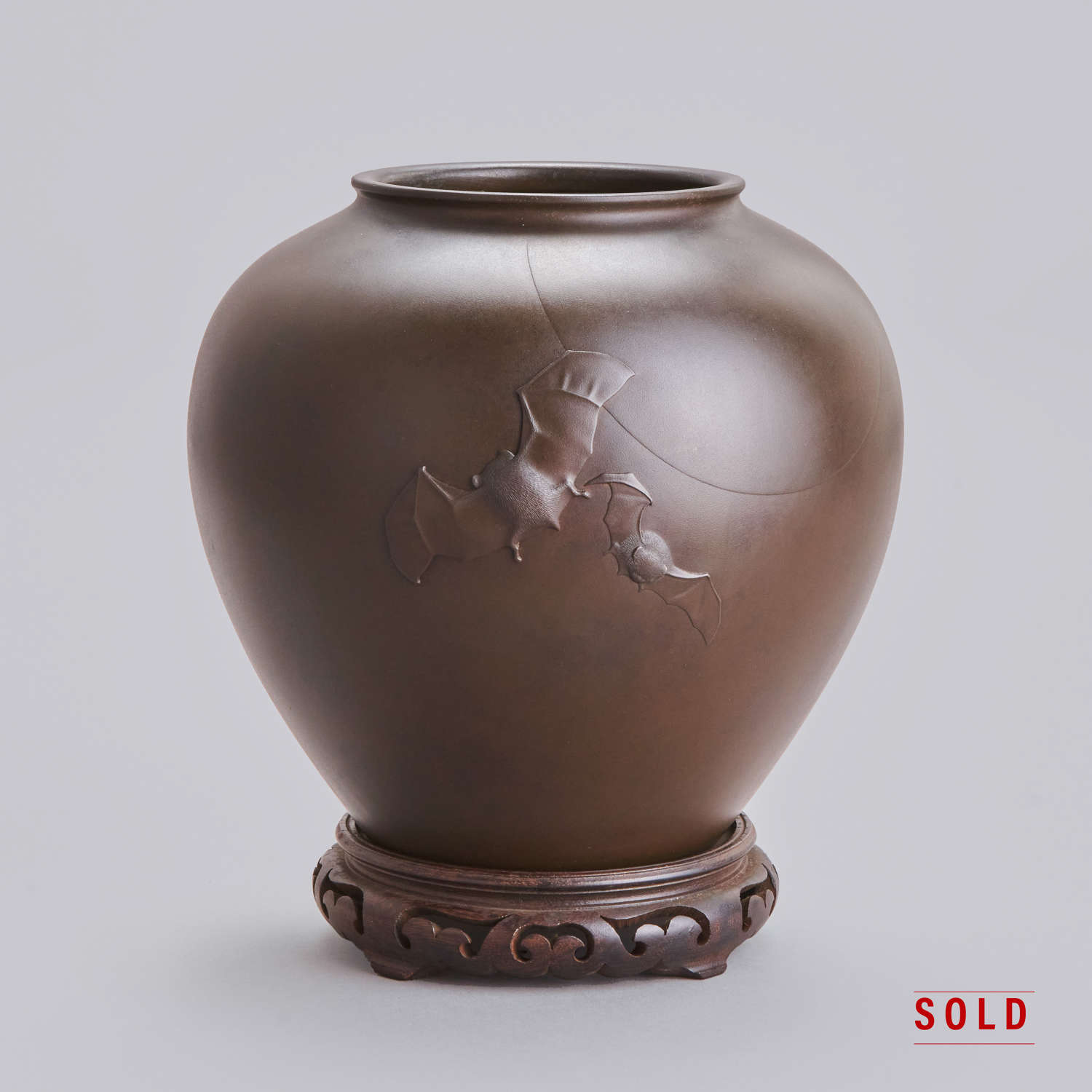







Code: 10219
Dimensions:
Japanese bronze vase of ovoid form with a short waisted neck flaring to a thick rim simulating russet iron. The shoulder carved in high relief with flying bats in the moonlight signed on the base with chiselled characters Joun 如雲 with a kao. Fitted wood stand and tomobako storage box, Meiji period (1868-1912).
Bats (kōmori) are symbolic of good fortune, prosperity, happiness and immortality. They are also believed to be the messengers of Amaterasu, the Shinto goddess of the Sun. The full moon is an auspicious event, the combination of bats and the moon suggests great happiness and contentment.
The artist Ōshima Joun 大島如雲 (1858-1940), given name Yasutaro, was the son of the cast-metal worker Oshima Takajiro, whose father Yasubei had started the family business. He succeeded to the business in 1877 and took the art name Joun. He used the go Shokaken and became one of the great sculptors of the late Meiji, Taisho and early Showa periods. He first exhibited in Paris in 1878 and also taught at the Tokyo Art School 東京美術学校 Tōkyō Bijutsu Gakkō from 1887 until 1932 and was a member of innumerable committees and panels of judges at exhibitions and competitions. He exhibited at several of the great international expositions of the era, including St. Louis (1904) and London (1910).
Reference: 'Meiji no Takara 明治の宝 Treasures of Imperial Japan, the D. Khalili Collection', Metalwork part II, no. 102.
Works by the artist are held in the collections of the Tokyo National Museum (Tōkyō Kokuritsu Hakubutsukan 東京国立博物館) Ueno Park, Taitō ward and the Tokyo National Museum of Modern Art (Tōkyō Kokuritsu Kindai Bijutsukan 東京国立近代美術館).
All our pieces come with a BADA Certificate of Provenance (The British Antiques Dealer's Association) and are inclusive of free worldwide shipping & insurance.